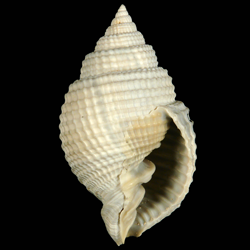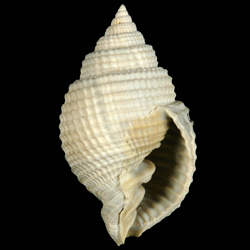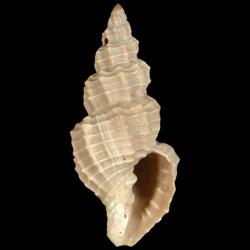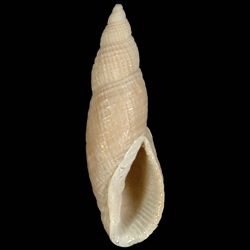
Cancellariidae

- Phylum: Mollusca
- Class: Gastropoda
- Order: Neogastropoda
- Family: Cancellariidae
Overview
Common name: Nutmeg shells
Key morphological features: The Cancellariidae are small to medium sized gastropods with robust, globose, fusiform shells that can be either umbilicate or anomphalous. The body whorl is most often relatively large, with a short siphonal canal, and a medium or high spire. The shell exterior of most species features prominent spiral cords crossed by equally prominent and similarly sized axial cords, producing the family’s namesake cancellate or reticulate ornamentation. The whorl shoulders are often strong and can be rounded or sharp. The aperture of most species is wide, the labrum (often thickened) can be smooth or dentate, and the columella most often features two or three prominent folds, although it is smooth in a few species. Sources: Davies, A.M. 1971. Tertiary Faunas Vol. 1, second edition. New York: American Elsevier Publishing Company, Inc. 571 pp.; Tunnell Jr., J.W., Andrews, J., Barrera, N.C., Moretzsohn, F. 2010. Encyclopedia of Texas Seashells. College Station: Texas A&M University Press. 512 pp.
Geological range: Upper Cretaceous to Recent (Davies, 1971).
Geographic distribution: A distributional map for modern Cancellariidae may be accessed from OBIS. A distributional map for ancient Cancellariidae may be accessed from the Paleobiology Database.
Diversity: There are 330 recognized living species of Cancellariidae and 57 genera (WoRMS database, unvetted). The Paleobiology Database recognizes 52 fossil genera and 541 fossil species of Cancellariidae (unvetted).
Paleoecology: The Cancellariidae are marine gastropods and are adapted for suctorial feeding, consuming the contents of egg capsules or bodily fluids of various hosts. They inhabit shallow intertidal to deep subtidal (to ~1000m) soft sediment habitats worldwide. Source: Tunnell et al. (2010); ; Modica et al. (2011).
Phylogenetic status: Monophyletic. Based on morphological and some molecular evidence, Modica et al. (2011) suggest that the Cancellariidae are monophyletic. The molecular phylogenetic analysis of Modica et al. (2009) also supports the monophyly of Family Cancellariidae. Reference: Modica, M.V., Kosyan, A., Oliverio, M. 2009. The relationships of the enigmatic gastropod Tritonoharpa (Neogastropoda): new data on early neogastropod evolution? The Nautilus 123 (3): 177-188.




